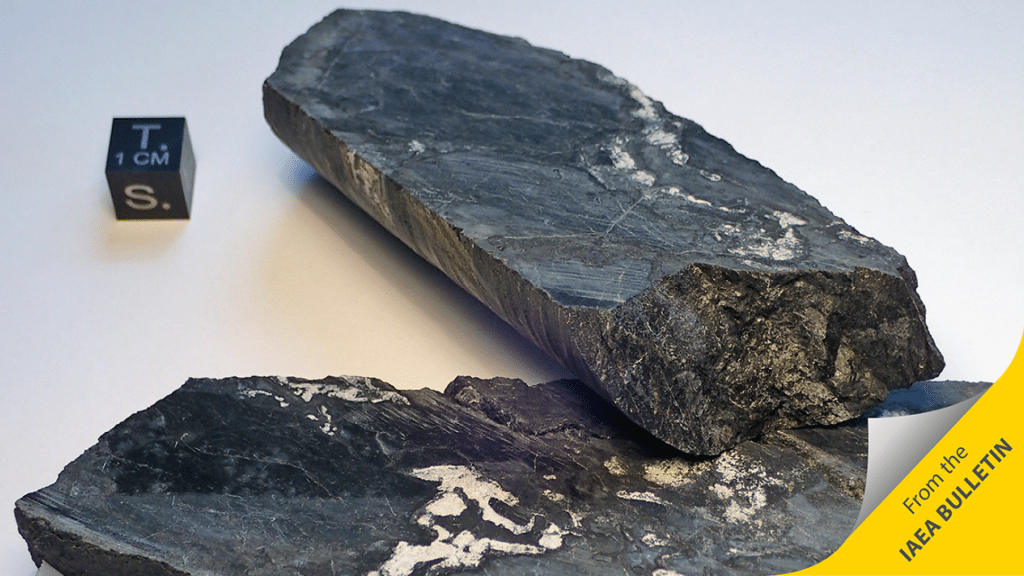The Curious Case of a Two-Billion-Year-Old Nuclear Reactor

A rock sample from Oklo in Gabon, the world’s oldest and only natural reactor. Courtesy: IAEA Bulletin
Scientists appear to have unraveled the mystery of uranium ore found at a mine in Oklo region of the Central African state of Gabon that exhibits a lower proportion of uranium-235 (U-235)—the fissile sort.
According to an August 10 bulletin from the International Atomic Energy Agency (IAEA), the first response that physicists had when they first found the high-grade ore in 1972 was that it wasn’t natural: “At first, all the physicists could think of was that the uranium ore had gone through artificial fission, i.e. that some of the U-235 isotopes had been forced to split in a nuclear chain reaction. This could explain why the ratio was lower than normal,” the bulletin says.
All natural uranium today contains 0.720% of U-235. “If you were to extract it from the Earth’s crust, or from rocks from the moon or in meteorites, that’s what you would find.…